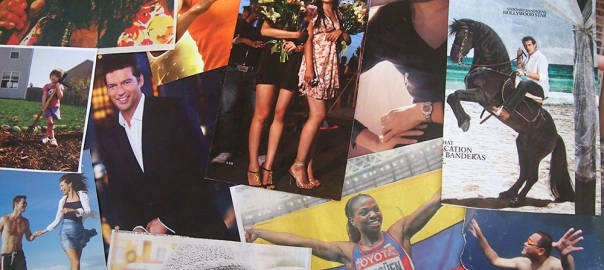This lesson focuses on speaking and writing. It can be used in beginner to intermediate adult community classes or high school conversation clubs. At the end of the lesson, students should be able to answer the question, “What does he/she look like?” and describe the physical appearance of a person by utilizing the verbs TO BE, and TO HAVE.
Time: 1–1.5 hours
Materials:
- post-it notes
- images of people from magazines or newspapers
- white board
- board markers
- paper
- pencils/pens
Vocabulary / Key Phrases:
~Questions
- What does he/she look like? // ¿Qué apariencia física tiene?
- What do they look like? // ¿Qué apariencias físicas tienen?
~Verbs
- To Be (I am, You are, He/She is, We are, You are, They are) // Ser (Yo soy, Tú eres, Él/Ella/Usted es, Nosotros somos, Ellos/Ellas/Ustedes Son)
- To Have (I have, You have, He/She has, We have, You have, They have) // Tener (Yo tengo, Tú tienes, Él/Ella/Usted tiene, Nosotros tenemos, Ellos/Ellas/Ustedes tienen)
~Adjectives (to use with the verb TO BE)
- tall, short // alt@, baj@
- fat, thin // gord@, delgad@
- young, old // joven, viej@
- beautiful/ handsome, ugly // bonit@ / lind@, fe@
[Examples]
- I am short.
- You are thin.
- He is young.
- We are tall.
- You are fat.
- They are beautiful.
~Adjectives (to use with the verb TO HAVE and TO WEAR)
- long, short // larg@, cort@
- big, small // grande, pequeñ@
- light, dark // clar@, oscur@
- blue, green, brown, black // azul, verde, marrón, negr@
[Examples]
- I have blue eyes.
- You have long hair.
- She wear a short skirt.
- We have dark skin.
- You have small noses.
- They wear black pants.
~Body Part Nouns
- hair // cabello
- eyes // ojos
- nose // nariz
- mouth // boca
- ears // orejas
- skin // piel
- …
Lesson:
- Converse with students as they enter the classroom. “How are you today? How was your weekend?” etc. Perhaps bring some food to share. (5 minutes)
- Guessing game icebreaker: Each student receives one post-it note. They must write a person’s name (a celebrity, character, someone in the classroom, etc.) on the post-it and stick it on another student’s forehead. The students must take turns trying to guess the name of the person on their forehead, asking three yes-or-no questions at a time. For example, “Am I a man? Am I old? Am I Mariah Carey?” The first person to guess correctly wins. If there are too many people, split into smaller groups, so the students have more chances to speak. (10 minutes)
- Show the class a few magazine cut-outs of people and test their prior knowledge by asking, “What does he/she look like?” (5 minutes)
- Write the vocabulary and verb conjugations on the board, with Spanish translations if necessary. Hand out a photocopy or ask the students to copy the material in their notebook. Say each word and ask the students to repeat. (15 minutes)
- Point to students in the class and ask questions such as, “Is he young?” Encourage them to answer, “Yes he is. OR No, he is old.” (5 minutes)

- Give each student an image of a person, and have them write a paragraph describing the person’s physical appearance. Encourage the students to ask questions about specific vocabulary pertaining to their image. For example, if a student were to describe the image of the old woman, they could say, “She is old and has gray hair. She has wrinkles. She has light skin and small eyes.” (More advanced students can utilize other verbs and more diverse vocabulary in their descriptions.) (20 minutes)
- The students will present their paragraph in front of the class. (15 minutes)
- Reinforce the material by holding up a few images and asking specific students to describe what that person looks like. (5 minutes)
- “Goodbye! See you next week.” Clean up. (5 minutes)
